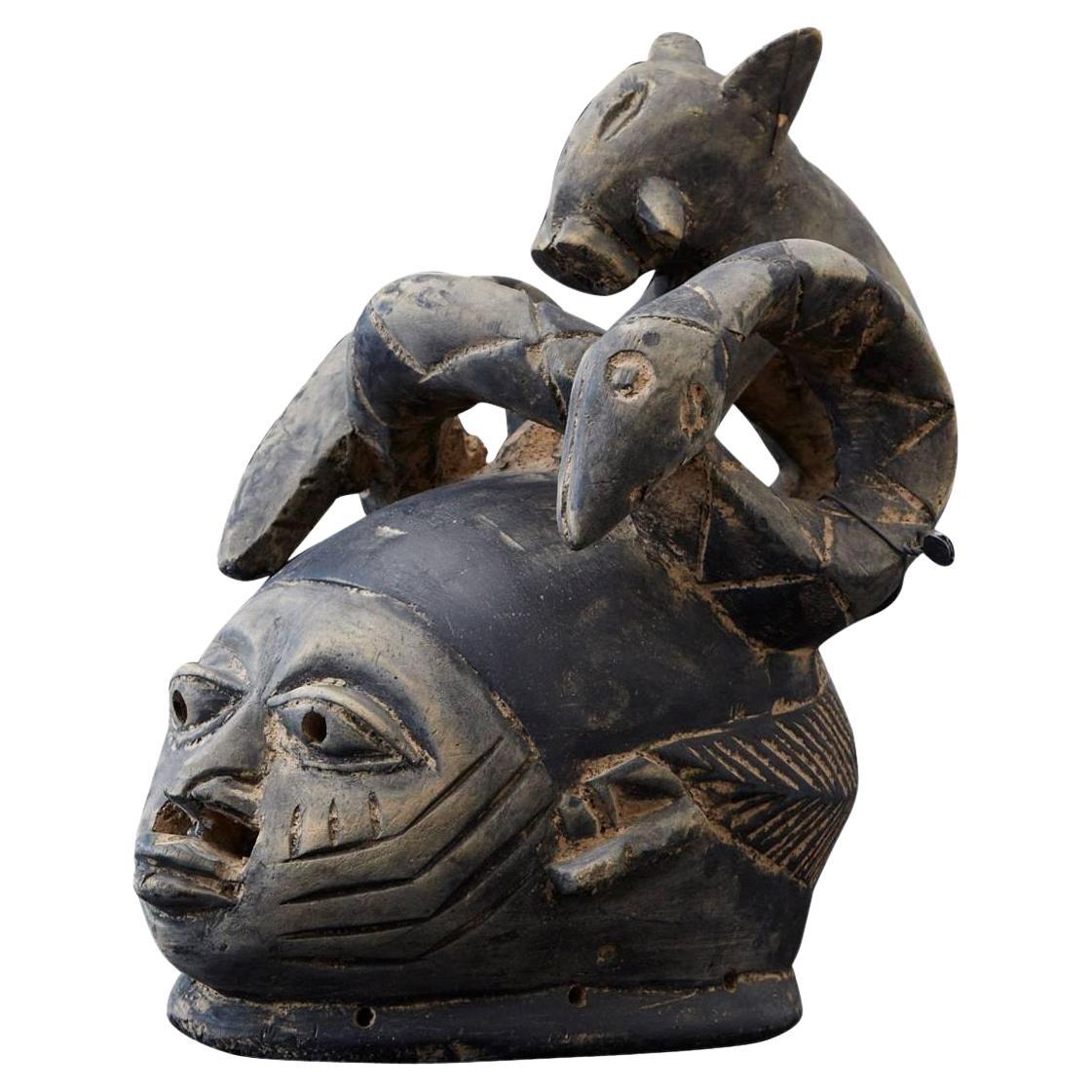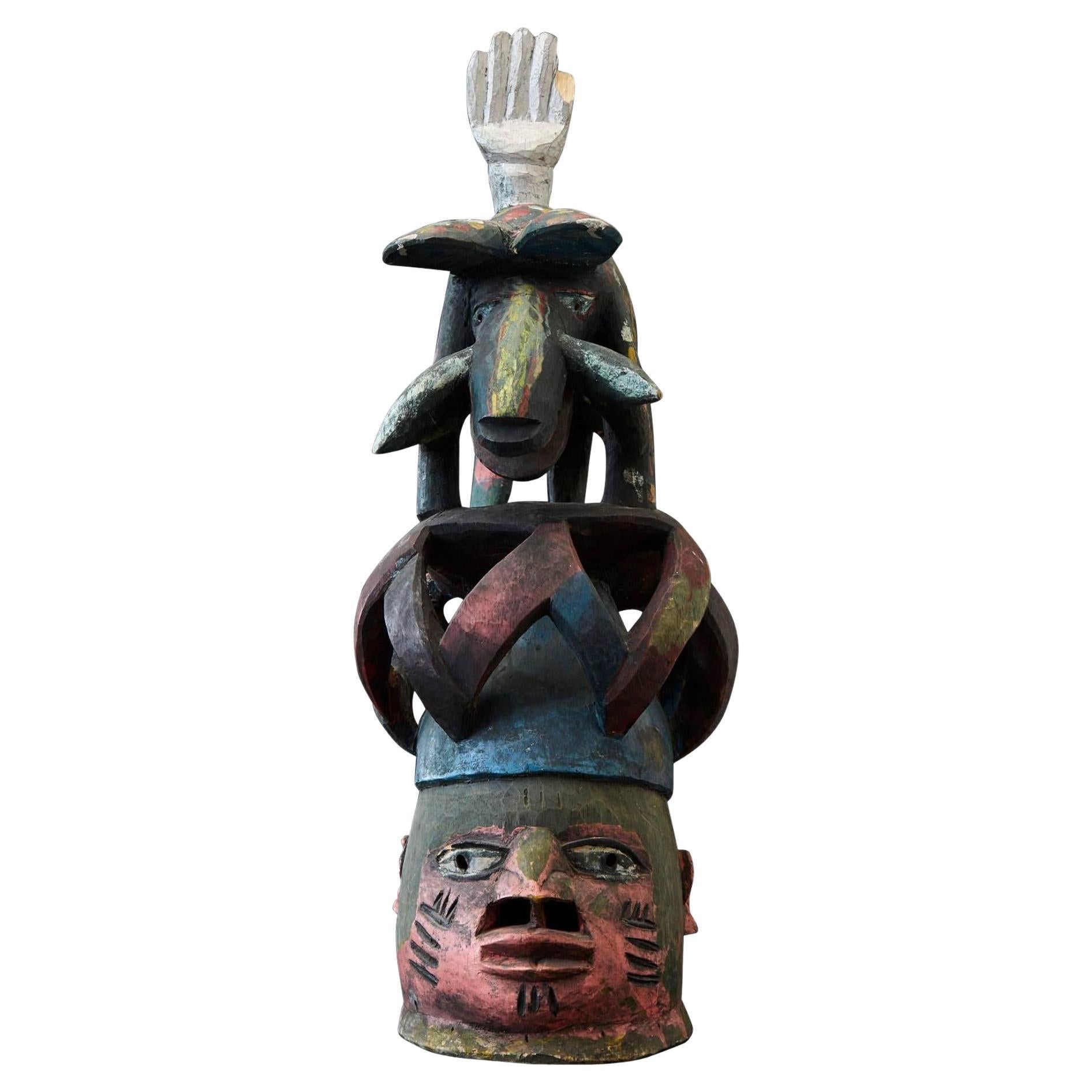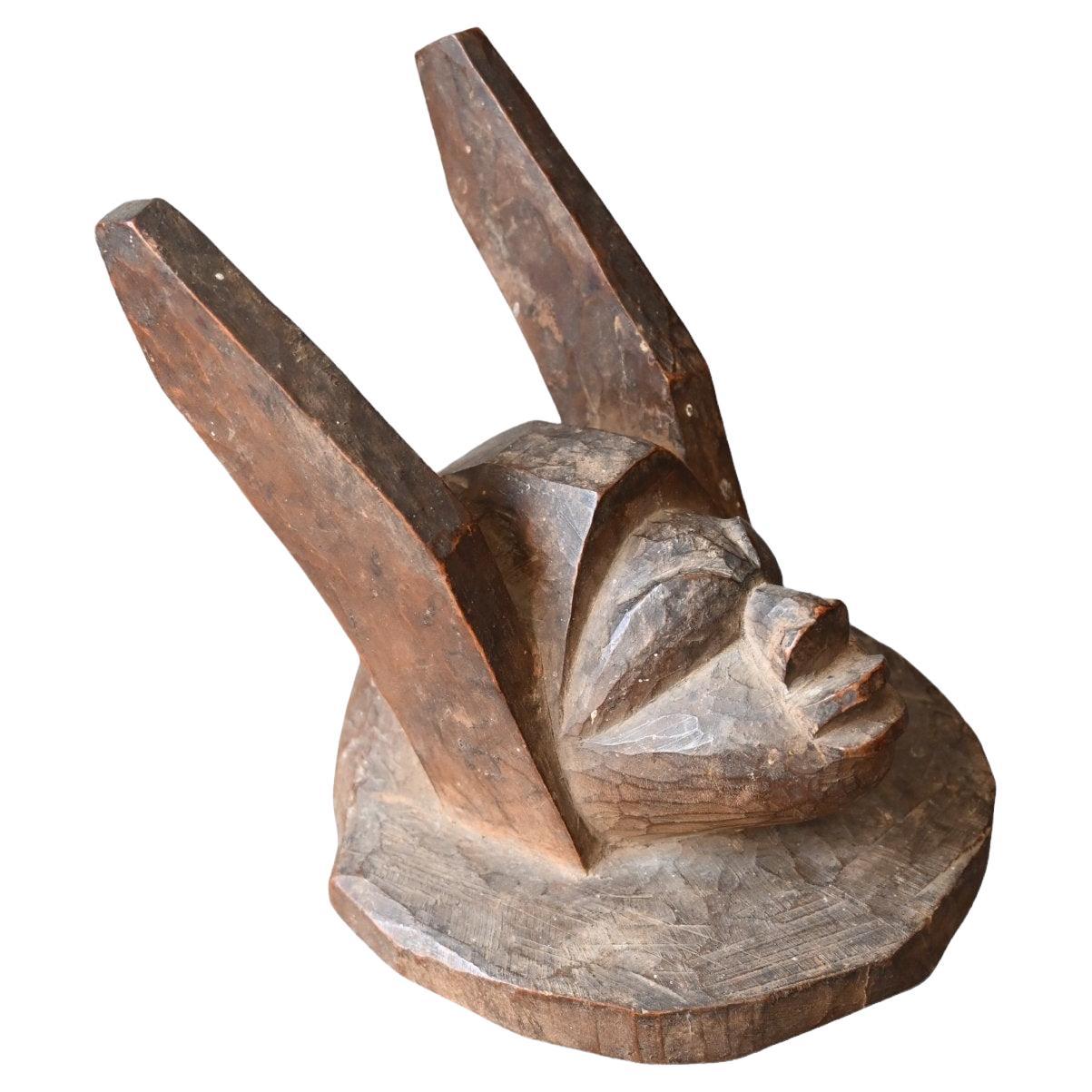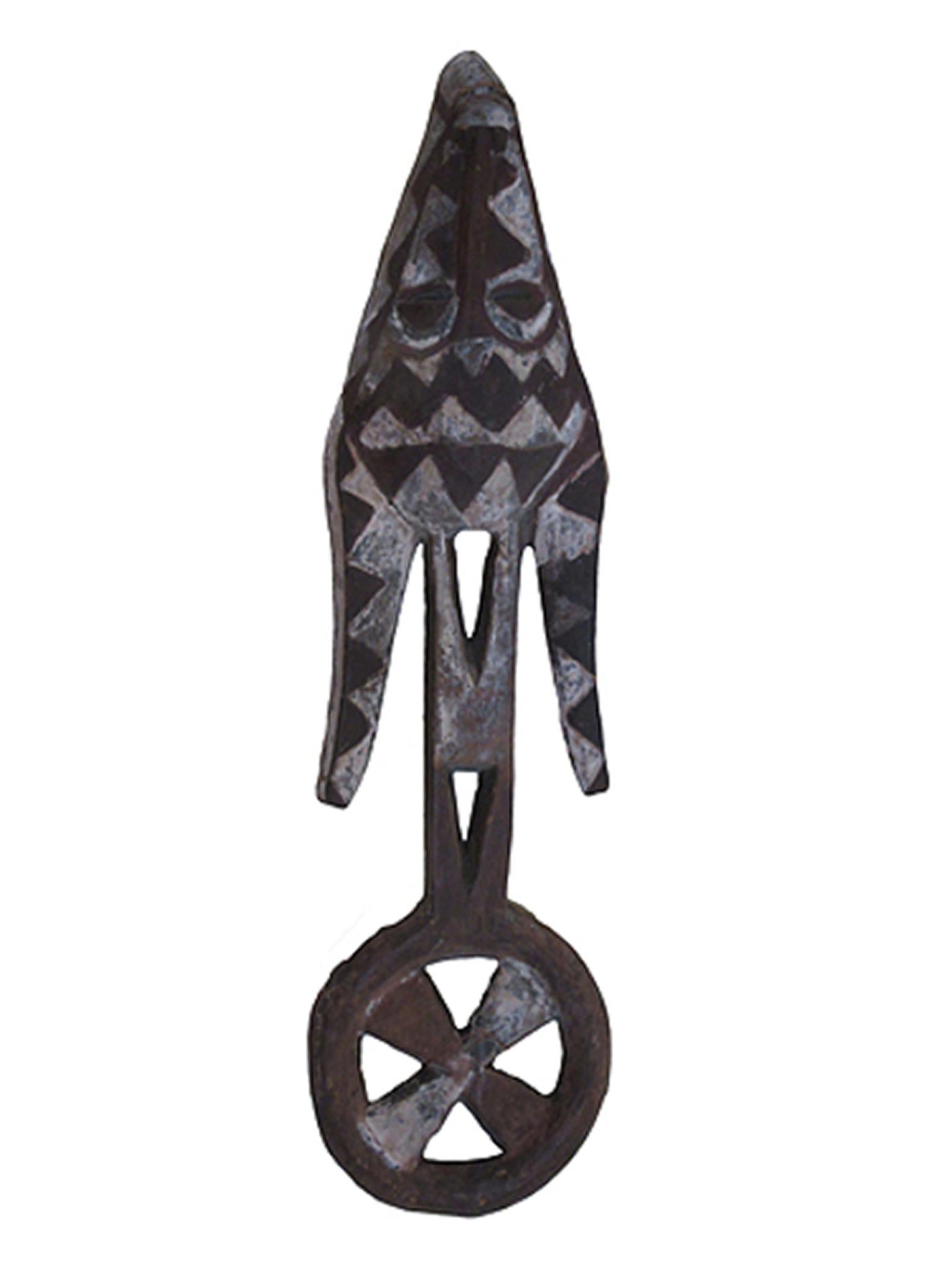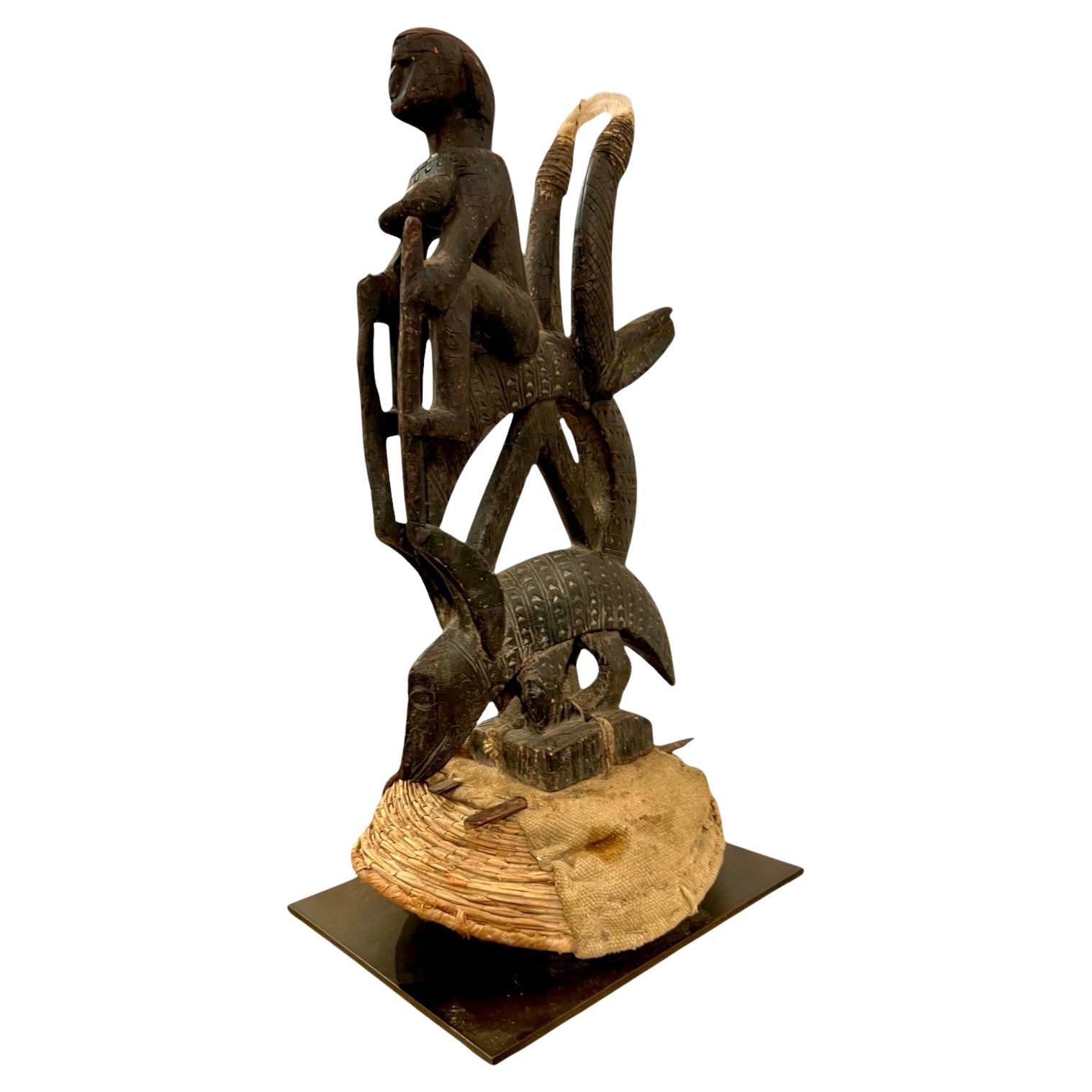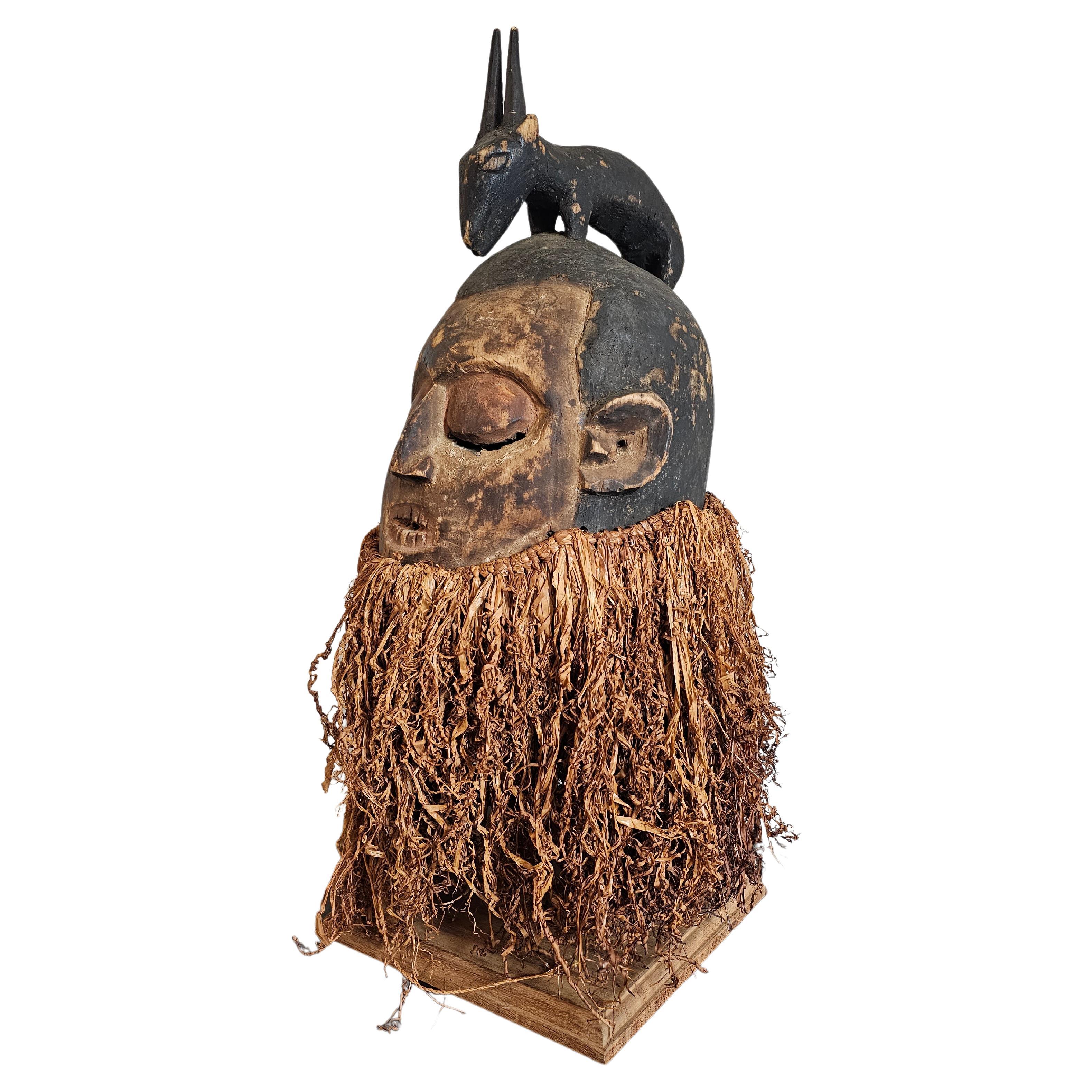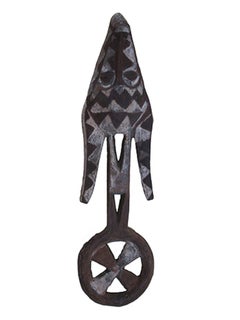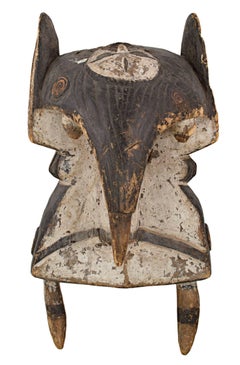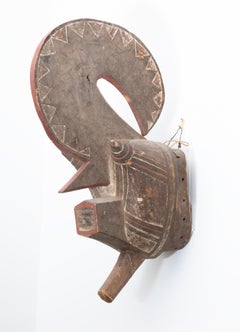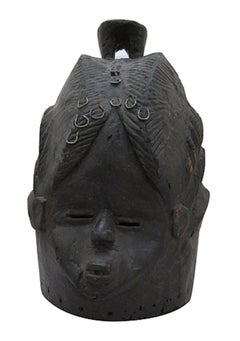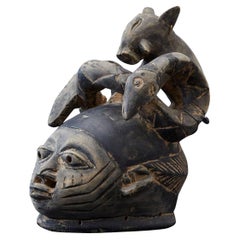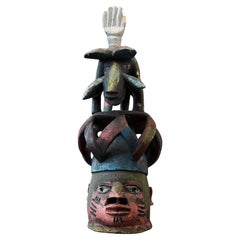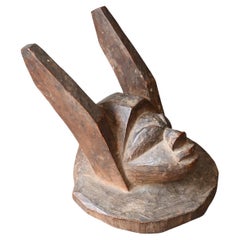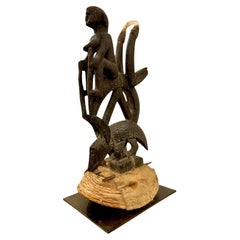Items Similar to "Mossi Head dress Mas ceremonies Rep Upper Volta, " Wood created c. 1910
Want more images or videos?
Request additional images or videos from the seller
1 of 4
Unknown"Mossi Head dress Mas ceremonies Rep Upper Volta, " Wood created c. 1910c.1910
c.1910
$7,830
£5,995.10
€6,868.50
CA$11,173.10
A$12,228.77
CHF 6,356.57
MX$147,177.46
NOK 79,912.19
SEK 74,960.12
DKK 51,303.25
About the Item
"Mossi Head dress Mas ceremonies Rep Upper Volta" is a wood sculpture that includes various other materials such as fabric, and fibers. An abstracted animal with a hump and a bird on it's back make up the top of the headdress.
27" x 6" x 1"
The Mossi states were created about 1500 A.D., when bands of horsemen rode north from what is now northern Ghana into the basin of the Volta River and conquered several less powerful peoples, including Dogon, Lela, Nuna, and Kurumba. These were integrated into a new society call Mossi, with the invaders as chiefs and the conquered as commoners. The Mossi make both political art and spiritual art. Figures are used by the ruling class to validate political power, and masks are used by the conquered peoples to control the forces of nature. The several mask styles reflect the diversity of the population before the 15th century invasion. Long tall masks in the north are made by the descendants of the conquered Dogon population, while red, white, and black animal masks in the southwest are made by descendants of the conquered Gurunsi peoples.
About the Seller
4.9
Gold Seller
Premium sellers maintaining a 4.3+ rating and 24-hour response times
Established in 1966
1stDibs seller since 2017
451 sales on 1stDibs
Typical response time: 2 hours
- ShippingRetrieving quote...Shipping from: Milwaukee, WI
- Return Policy
Authenticity Guarantee
In the unlikely event there’s an issue with an item’s authenticity, contact us within 1 year for a full refund. DetailsMoney-Back Guarantee
If your item is not as described, is damaged in transit, or does not arrive, contact us within 7 days for a full refund. Details24-Hour Cancellation
You have a 24-hour grace period in which to reconsider your purchase, with no questions asked.Vetted Professional Sellers
Our world-class sellers must adhere to strict standards for service and quality, maintaining the integrity of our listings.Price-Match Guarantee
If you find that a seller listed the same item for a lower price elsewhere, we’ll match it.Trusted Global Delivery
Our best-in-class carrier network provides specialized shipping options worldwide, including custom delivery.More From This Seller
View All"Bobo Mask of Dance, " Wood created in the Volta Region, Ghana in c. 1930
Located in Milwaukee, WI
"Bobo Mask of Dance" is a wood sculpture with painted accents. A human face with two protruding shapes make up the mask, while a long structure sit atop.
37...
Category
1930s Tribal Abstract Sculptures
Materials
Wood
"Male Initiation Mask Wawa-Ibo Tribe, " Wood created in Nigeria circa 1910
Located in Milwaukee, WI
This mask was created by an unknown artist from the Waawa-Igbo tribe of Nigeria. It is made of wood. Amongst the Waawa people there is a lot of cultural diversity, and each locality ...
Category
1910s Folk Art Sculptures
Materials
Wood
"Bobo Mask Burkina Fasso-Upper Volta, " Carved & Painted Wood created c. 1945
Located in Milwaukee, WI
"Bobo Mask Burkina Fasso-Upper Volta" is a wood carved sculpture with painted details. It features the image of an abstracted face with a large almost elepha...
Category
1940s Tribal Abstract Sculptures
Materials
Wood
"Secret Society Mask-Sierra Leone W. Africa, " Wood created circa 1930
Located in Milwaukee, WI
"Secret Society Mask-Sierra Leone W. Africa," is a wood sculpture of a woman's head. The hair has been sculpted with intricate detail, and metal hair adornments...
Category
1930s Tribal Figurative Sculptures
Materials
Wood
"Mende Mask, " Carved Wooden Mask created in Sierra Leone c. 1930
Located in Milwaukee, WI
This mask was hand-carved by an unknown artist from the Mende tribe in Sierra Leone, Africa. It depicts a face with its eyes downcast, hair in rows, and two birds on the top.
16" x 10" x 10 1/2"
The Mende people (also spelled Mendi) are one of the two largest ethnic groups in Sierra Leone. The Mende are mostly farmers and hunters. Much Mandé art is in the form of jewelry and carvings. The masks associated with the fraternal and sorority associations of the Marka and the Mendé are probably the best-known, and finely crafted in the region. The Mandé also produce beautifully woven fabrics which are popular throughout western Africa, and gold and silver necklaces, bracelets, armlets, and earrings.
Masks are the collective Mind of Mende community; viewed as one body, they are the Spirit of the Mende people. The Mende mask...
Category
1930s Figurative Sculptures
Materials
Wood
"Large Head with Horns - Nigerian, Ekoi People, " Carved Wood created circa 1950
Located in Milwaukee, WI
This carving is of a large head with three horns. This piece is made of wood and skin by the Ekoi people of Nigeria. Ekoi people, also known as Ejagham, are an ethnic group in the ex...
Category
1950s Folk Art Figurative Sculptures
Materials
Animal Skin, Wood
You May Also Like
Gelede Headdress, Yoruba People, Nigeria, circa 1920s
By Yoruba People
Located in Aramits, Nouvelle-Aquitaine
Gelede festivals honor the creative and dangerous power of women elders, female ancestors and goddesses known as "our mothers". The Gelede headdress often consists of two parts, a lo...
Category
Early 20th Century Nigerian Tribal Tribal Art
Materials
Wood
Gelede Headdress, Yoruba People, Nigeria, circa 1950s
By Yoruba People
Located in Aramits, Nouvelle-Aquitaine
Gelede festivals honor the creative and dangerous power of women elders, female ancestors and goddesses known as "our mothers". The Gelede headdress often consists of two parts, a lo...
Category
Mid-20th Century Nigerian Tribal Tribal Art
Materials
Wood
Antique carved wooden headdress from the Yoruba tribe, Nigeria, 1900-1920
By Yoruba Tribe
Located in Bilzen, BE
A carved wooden headdress from the Yoruba tribe, Nigeria
Strong expression face
Early 20th century
Rich tribal aged patina
Heigth 12 cm, diameter 12 x 13 cm
Category
Early 20th Century Nigerian Tribal Tribal Art
Materials
Wood
Ciwara Bambara headdress in carved wood and basketry, Mali, Early 20th century
Located in NICE, FR
A very pleasing Ciwara crest, singularly small and accompanied by its original headdress, depicting a stylized antelope leaning on a pangolin. The antelope is ridden by a woman, and white horsehair has been added to the tips of the horns. The piece is carefully sculpted, with notches decorating the bodies of the antelope and the pangolin.
Rattan, plant fiber, cowries, wood Very fine velvety mat patina, Circa 1950
An animal called Ciwara is said to have taught the Bambara how to cultivate the land, and during agrarian ceremonies, they recall the myth through the stylized representation of an antelope whose name ci wara...
Category
Early 20th Century Malian Tribal Tribal Art
Materials
Wood
Antique Congolese African Tribal Carved Hemba Helmet Mask, Suku Peoples
Located in Forney, TX
A scarce antique African tribal carved Hemba helmet mask, the Suku peoples, possibly Kwese culture, Democratic Republic of the Congo, Central Africa, early 20th century, surmounted by four-legged animal, over round face, with mouth ajar and incised jagged teeth exposed, protruding almond shaped eyes, scattered remnants of pigment, full raffia fiber fringe, mounted on wood stand.
A superb museum quality example, this remarkable tribal folk art sculpture is a wonderful way to add rustic warmth, rich historical depth, and fascinating cultural interest to any space!
Dimensions: (approx)
Overall: 26" High, 9" Wide, 10.25" Deep;
Mask only: 15" Tall;
7 lbs total
Provenance / Acquisition:
Acquired from the highly reputable auction house, Austin Auction Gallery, est.1983, Austin, Texas.
Excellent Condition:
Nicely aged distressed patina over the whole. Highly desirable wear consistent with age and indicative of use, including scattered losses, antique character marks and typical signs of aging throughout. Retaining scattered remnants of original pigment. Overall a superb museum quality example
Primitive Arts Of Africa:
Among the Suku of the southwestern part of the Democratic Republic of the Congo, masks plays crucial role in protecting boys during initiation, the vulnerable period between boyhood and manhood. The power contained in Hemba masks...
Category
Early 20th Century Congolese Tribal Tribal Art
Materials
Raffia, Wood
Bambara Ci Wara Headdress Sculpture
Located in Chicago, IL
Carved to honor the mythical being Ci Wara, a Bambara deity that’s half mortal and half animal, this wooden headdress combines the graceful head and horns of a...
Category
Mid-20th Century Malian Tribal Abstract Sculptures
Materials
Wood
